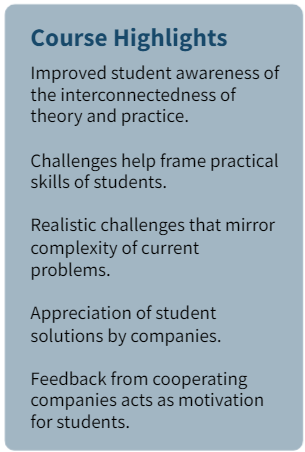Intrapreneurship
Course Summary:
This course highlights the importance and methods applied in intrapreneurship, particularly design thinking, value proposition design, analytical and creative thinking styles, and peer learning. The course also emphasizes a cooperation of students and companies – important faculty stakeholders. Students worked in groups of 4 solving challenges assigned by 10 companies applying design thinking methodology. Partial and final solutions presented in given deadlines were discussed both in class with instructors and beyond the class with companies to ensure relevant feedback loop. Different pedagogical approaches like analytical and creative thinking styles, peer learning, were introduced during the course.
Course Design:
 The design of the course followed the fulfillment of its objectives. The theoretical part of the course focuses on key theoretical starting points - primarily Design thinking and practice-based approach.
The design of the course followed the fulfillment of its objectives. The theoretical part of the course focuses on key theoretical starting points - primarily Design thinking and practice-based approach.
Course is based on cooperation with university stakeholders – companies from different industries. Companies formulate project assignments that students solve during the semester. Companies also designate mentors that, together with lecturers, support students and assess their outcomes submitted in deadlines during the semester and final presentation.
After completing the course, the students should be able to solve complex managerial issues by applying the design thinking methodology. Students should also be able to demonstrate innovative entrepreneurs' "five discovery skills" – associating, questioning, observing, experimenting, and networking. And above all, students learn about the culture of the companies, different approaches and issues coming from communication with practitioners and the pros and cons of teamwork. The acquired experience and theoretical knowledge are essential prerequisites for the student's successful managerial work in the future.
The course brings multiple benefits for companies as well. The first is that companies are introduced to the latest methods and techniques used in management practice. The second is the tailor-made solutions to their assignments that they get from the students. Finally, companies could get to know specific students and, if they need employees of this profile, they can offer them a job position.
Contact:
Jaroslav Huľvej –
